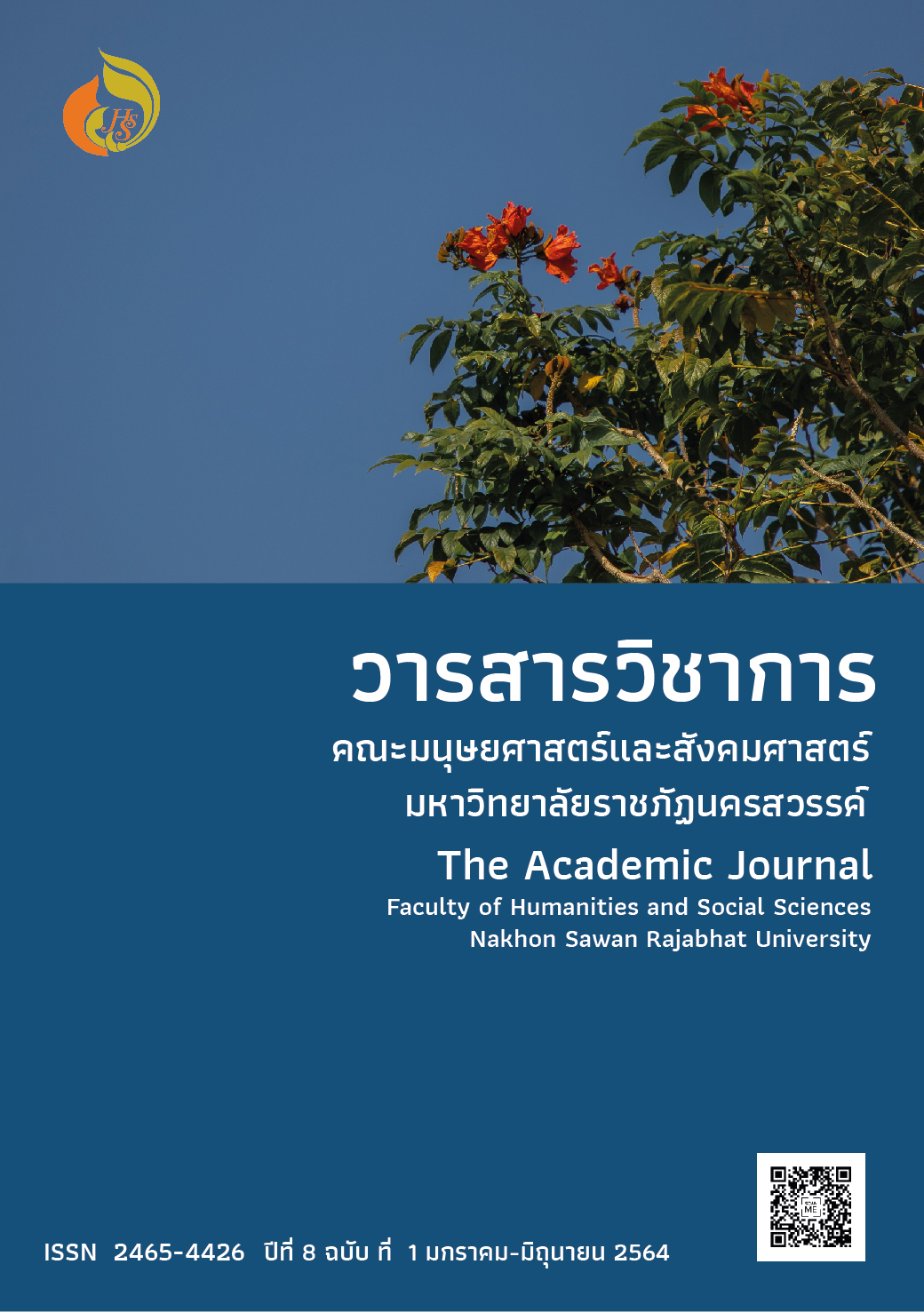The Art of Traditional Folk Dancing Entitled Soeng Homdang in the Chaicumphun Subdistrict, Laplae District, Uttaradit Province
Main Article Content
Abstract
The study on creative folk dance entitled Serng Homdang in Chaichumpon Subdistrict, Laplae District, Uttaradit Province was intended to study the history and background of the dance, the components of the dance created by Miss Pornthip Manyuan, sage villager in Chaichumpon, Laplae, Uttaradit, and the role of the dance performance in the socio-cultural context. The research instruments were a researcher-constructed interview form, digital camera, video camera, and tape recorder.
The results show that the Serng Homdang folk dance depicts the shallot farming practiced by villagers in Chaichumpon, Laplae, Uttaradit which is recognized as an important shallot farming area for quality in Thailand. Miss Pornthip Manyuan invented the dance to show a unique way of making a living of the villagers. With regard to the dance components, there are 15 dance postures including standing, one-sided arm waggling, glancing, soil digging, sabat chip, two-sided arm waggling, straw covering, walking, watering, colander carrying, basket preparing, shallot picking, sweat wiping, being abashed and ending. It is a partner dance in which a male performer wear a keng shirt and kamuh pants, while a female dancer wear a keng blouse and lablaeng skirt (Sin Dam Puk). The dance props include a colander, a basket of shallot and a hoe. Though music and songs can be selective and are not specifically assigned, Isaan Lai Toey Khong music is typically used as its fast, cheerful beats are considered well accompanied with shallot farming activities. Serng Homdang plays a role as a local identity that brings about pride among community members, as a communication tool for the outsiders to understand the social context of Chaichumpon, as a representation of aesthetic value in the way of life, as a local performance for welcoming guests on various occasions, and as a physical and mental health promotion activity for the elderly.
Article Details

This work is licensed under a Creative Commons Attribution-NonCommercial-NoDerivatives 4.0 International License.
References
ธีรวัฒน์ ช่างสาน. (2553). การสร้างสรรค์ท่ารำนาฏยประดิษฐ์ระบำลีลานาฏกะ. สืบค้นเมื่อ 19 มิถุนายน 2561, จาก https://www.gotoknow.org/posts/346233
ประทีป นักปี่. (2546). ตุ๊บเก่ง : ดนตรีพิธีกรรมงานศพบ้านป่าแดง จังหวัดเพชรบูรณ์ (วิทยานิพนธ์ปริญญามหาบัณฑิต). นครปฐม: มหาวิทยาลัยมหิดล.
ปรุฬห์จักร อัครารัศม์สกุล. (2562). การสร้างสรรค์ชุดการแสดงนาฏศิลป์พื้นบ้านภาคเหนือ เพื่อการออกกำลังกายสำหรับผู้สูงอายุที่มีภาวะเสี่ยงต่อการเกิดโรคข้อเข่าเสื่อม โรงเรียนผู้สูงอายุ ตำบลน้ำริด อำเภอเมือง จังหวัดอุตรดิตถ์ (ปริญญานิพนธ์ปริญญามหาบัณฑิต). กรุงเทพฯ: มหาวิทยาลัยศรีนครินทรวิโรฒ.
พรทิพย์ มั่นยวน. (10 กุมภาพันธ์ 2561). สัมภาษณ์.
พีรพงศ์ เสนไสย. (2546). นาฏยประดิษฐ์. มหาสารคาม: สาขานาฏยศิลป์ คณะศิลปกรรมศาสตร์. มหาวิทยาลัยมหาสารคาม.
ยศ สันตสมบัติ. (2537). มนุษย์กับวัฒนธรรม. กรุงเทพฯ: สำนักพิมพ์มหาวิทยาลัยธรรมศาสตร์.
สวภา เวชสุรักษ์. (2549). วารสารสุโขทัยธรรมาธิราช, 19(1).
สำนักงานวัฒนธรรมจังหวัดอุตรดิตถ์. (2558). องค์ความรู้มรดกภูมิปัญญาท้องถิ่นเมืองลับแล. อุตรดิตถ์: พี.ออฟเซ็ทอาร์ท.
สุมิตร เทพวงษ์. (2541). นาฏศิลป์ไทย. กรุงเทพ: โอเดียนสโตร์.
สุรพล วิรุฬห์รักษ์. (2543). นาฏยศิลป์ปริทรรศน์. กรุงเทพฯ: ห้องภาพสุวรรณ.


